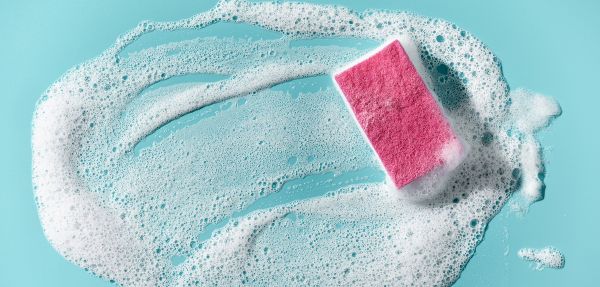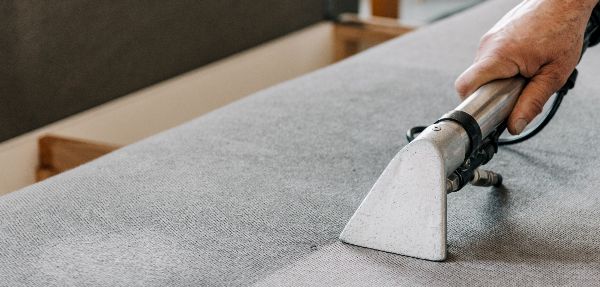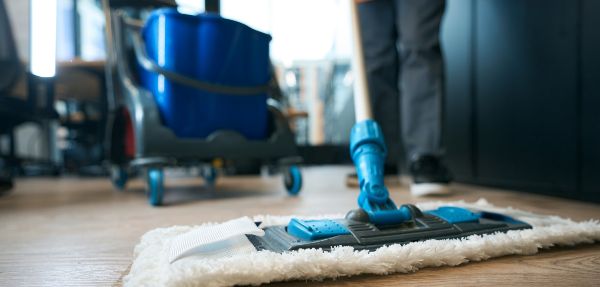Whether it’s at home or in the office, maintaining a clean environment is essential for our well-being. Regular cleaning is an activity we partake in daily, even if we don’t realise it, but sometimes it’s not enough, and a deep clean is required to go beyond the surface. So, how do we know when each is required, and how do the two differ?
Understanding the difference between regular cleaning and deep cleaning can help us make informed decisions about professional cleaning and gardening services, knowing when each is needed. In this blog post, we’ll provide useful cleaning tips by exploring the distinctions between regular cleaning and deep cleaning, their purposes, and when it’s appropriate to use each method.
Understanding Regular and Deep Cleaning

Before we dive into the appropriate times and specific occasions when each of these cleaning methods is needed, let’s learn a bit more about each one.
1. What is Regular Cleaning?
Regular cleaning refers to the routine and more general tasks performed to maintain a clean and hygienic environment in our homes or workplaces. The main reason we do it is to remove everyday dirt, dust, and surface-level grime to keep our living and working spaces tidy.
Regular cleaning is typically done on a more frequent basis than deep cleaning, depending on the specific needs of your home and lifestyle. It often involves cleaning high-traffic areas such as living rooms, bedrooms, kitchens, and bathrooms in our homes, and offices, boardrooms, bathrooms, and kitchens in our workplaces. Listed below are some of the common techniques and essential cleaning tools and supplies used for regular cleaning:
- Common techniques: Sweeping or vacuuming of floors, wiping down surfaces with all-purpose cleaners, dusting furniture and fixtures, and cleaning dishes and laundry.
- Common tools: Brooms, mops, vacuum cleaners, microfiber cloths, and basic cleaning solutions.
2. What is Deep Cleaning?
Deep cleaning goes beyond regular cleaning tasks to eliminate any hidden dirt, grime, and allergens that are harder to reach. It involves a thorough cleaning, disinfecting, and organising of areas that are not typically addressed during regular cleaning.
Deep cleaning is performed less frequently than regular cleaning, usually on a seasonal or as-needed basis. It focuses on areas that don’t get tended to daily, and therefore accumulate dirt and grime over time. These include baseboards, ceiling fans, vents, appliances, carpets, upholstery, and inside cabinets. Besides cleaning, it often also involves decluttering and organising. Listed below are the common techniques and tools used during the deep cleaning process:
- Common techniques: Steam cleaning carpets, scrubbing grout lines, polishing stainless steel appliances, descaling taps, and disinfecting hard-to-reach corners.
- Common tools: Steam cleaners, grout brushes, detailing brushes, and specific cleaning solutions.
Key Differences Between Regular Cleaning and Deep Cleaning

We’ve looked at some of the differences between the two cleaning processes above, but let’s do further exploration into the key differences between regular and deep cleaning.
1. Level of Intensity and Detail
A regular cleaning service focuses on surface-level maintenance and general tidying up, whereas deep cleaning involves more intensive and detailed cleaning efforts, often requiring special expertise and experience. Certain spots won’t be tended to during regular cleaning, usually due to time constraints, but deep cleaning, which takes longer, ensures the thorough removal of dirt, grime, and allergens.
2. Time and Effort Required
Regular cleaning is easier to integrate into our daily or weekly routines because it takes a shorter amount of time and effort to complete. Many homeowners do this without the help of an outside party. Deep cleaning, on the other hand, has a more comprehensive nature where specific areas and tasks are addressed and therefore requires more time, planning, and physical exertion. People often outsource deep cleaning tasks as there are many benefits of hiring professional cleaning services.
3. Specificity of Tasks
Regular cleaning consists of routine tasks that cover the essential cleaning needs of your home or workplace and can be done in a hurry. On the other hand, deep cleaning involves specialised tasks that target specific areas and surfaces, and require specific techniques.
When to Choose Each Type of Cleaning Service

Knowing when a regular clean will suffice, vs when a deep clean is needed will help you save lots of time, money, and effort. Let’s break it down further below.
1. When to Choose Regular Cleaning
Although regular cleaning forms the foundation of cleanliness and a hygienic environment, there are specific scenarios and guidelines for when it is appropriate and sufficient:
- General upkeep: Regular cleaning is suitable for daily maintenance, keeping your home tidy and presentable.
- Weekly or biweekly cleaning: Establishing and creating a custom cleaning schedule, such as weekly or biweekly, is beneficial in preventing the buildup of dirt, dust, and germs.
- Maintaining high-traffic areas: Regular cleaning is particularly important for high-traffic areas that get used daily, such as living rooms, kitchens, and bathrooms.
- Allergen control: If you or your family members have allergies or respiratory sensitivities, regular cleaning is crucial in minimising potential triggers such as dust mites, pet dander, and pollen.
2. When to Choose Deep Cleaning
While regular cleaning maintains cleanliness on a surface level, certain situations and indicators call for deep cleaning. These are the instances and occasions when deep cleaning is necessary:
- Seasonal cleaning: Deep cleaning is often performed as part of seasonal cleaning routines to prepare your space for a new season. It helps to remove dirt and particles brought about by weather elements from the season coming to an end.
- Moving into a new home: When you move into a new home a deep clean will ensure you eliminate any traces of the previous occupants and thoroughly sanitise the space before settling in.
- After renovation or construction: Home renovation or construction projects generate plenty of dust, debris, and residue. Knowing how to properly clean your home after renovations through deep cleaning is vital to restoring a spotless home, especially with the new changes.
- Occasional intensive cleaning: Certain areas or items in your home require deep cleaning every so often. These include carpets, upholstery, curtains, and mattresses to remove deep-seated dirt, stains, and allergens. Appliances such as ovens, fridges, and air conditioning units will also benefit from comprehensive cleaning to maintain their functionality.
Conclusion
Knowing the difference between regular cleaning and deep cleaning is essential to good health, productivity, and keeping a clean home or office space. With the above knowledge in mind, you can ensure the environments you live and work in are always kept spotless. This is something we specialise in at SweepSouth.
We’ve got a range of services falling in line with both regular and deep cleaning, to fit in with your schedule and to suit your needs. Book a SweepSouth cleaning service with SA’s #1 home services platform and enjoy the benefits of a happy home.









